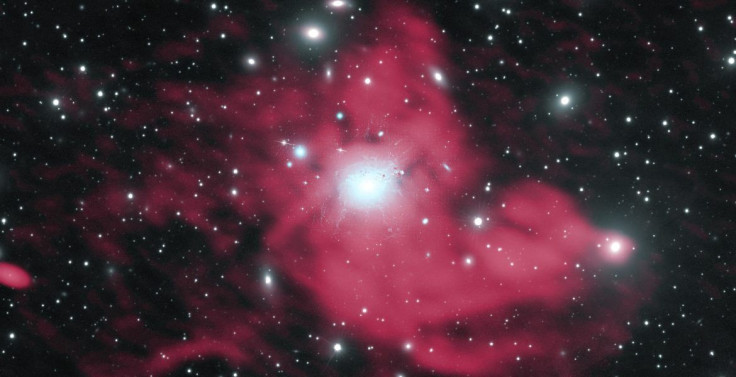Radio Emissions From Perseus Galaxy Cluster Provide New Insights Into Its ‘Mini-Halo’

About 30 galaxy clusters are known to harbor, embedded within their centers, a radio structure called a “mini-halo,” and the largest of these known mini-haloes is the one in the Perseus Cluster, over 250 million light-years away from Earth. And scientists have discovered details about this mini-halo that are helping them understand how these gigantic structures form at the center of a galaxy cluster.
Astronomers used the National Science Foundation’s Karl G. Jansky Very Large Array (VLA), in central New Mexico, to study the Perseus Cluster, so-named after the constellation it appears in. Radio waves-emitting superfast particles at its center create a radio structure that is about 1.3 million light-years in diameter, which is 10 times the size of the entire Milky Way galaxy.
Read: Astronomers Discover A Fast Radio Burst That's Even Stranger Than Ones Detected Before
It is this massive size of mini-haloes that has stumped scientists. Theoretically, the fast-moving particles should slow down as they move away from the center of the cluster, and as the decelerate, they should stop emitting radio waves much before they travel to distances that have been observed.
“At large distances from the central galaxy, we don’t expect to be able to see these haloes. However, we do see them and we want to know why," Marie-Lou Gendron-Marsolais from the University of Montreal, who was lead author of a recently published paper on the subject, said in a statement Tuesday.
The statement — issued by the National Radio Astronomy Observatory — said astronomers could image the Perseus Cluster due to the upgraded abilities of VLA that made the instrument “more sensitive to fainter radio emissions and provided higher resolution than previous radio observations.”
VLA was built in the 1970s, and was upgraded with new electronics in a decade-long process that was completed in 2012.
“The high-quality images that the upgraded VLA can produce will be key to helping us gain new insights into these mini-haloes in our quest to understand their origin,” Julie Hlavacek-Larrondo, also of the University of Montreal, and a co-author of the paper, said in the statement.
Read: Astronomers Discover Three New Fast Radio Bursts
The new details seen in the VLA images suggest the radio emissions from the mini-halo are caused by a series of complex mechanisms that are not the same everywhere in the cluster. Some emissions occur when particles reaccelerate due to the collision of small groups of galaxies with the cluster. Given the new images, scientists think some other radio emissions are caused by the powerful jets of particles that the supermassive black hole at the core of the central galaxy generates. These jets give a powerful energy “kick” to the particles.
“This would help explain the rich variety of complex structures that we see,” Gendron-Marsolais said.
The findings were published online Monday in an open-access paper titled “Deep 230–470 MHz VLA observations of the mini-halo in the Perseus cluster,” in the journal Monthly Notices of the Royal Astronomical Society.
© Copyright IBTimes 2024. All rights reserved.











